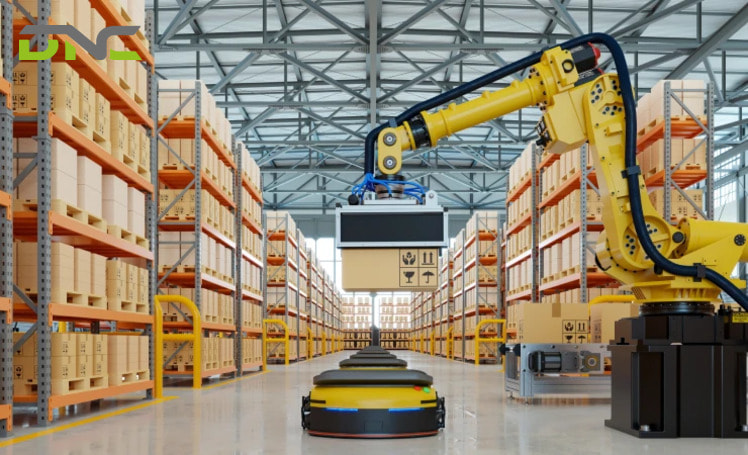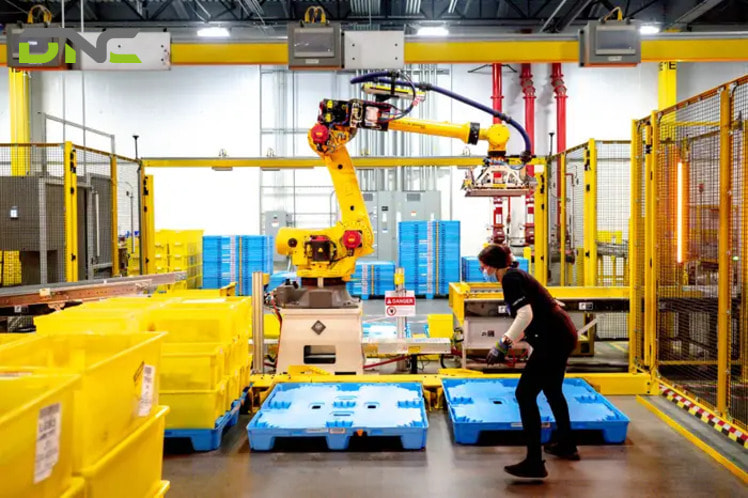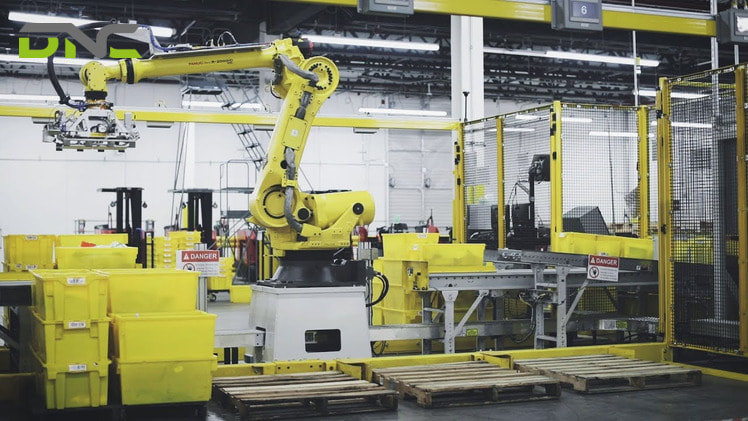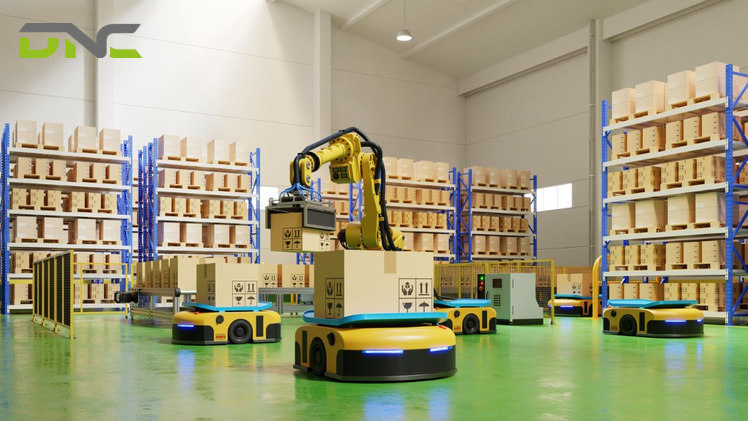Why should businesses invest in Robotics in Warehouse Automation?
In the era of digital transformation, warehouse automation with robots (Robotics in Warehouse Automation) is becoming the key to help businesses accelerate operations, reduce costs and improve accuracy. Not only simply replacing manual labor, modern robot systems also provide flexible, synchronous and intelligent processing capabilities – opening up a new direction for warehouse management in the era of industry 4.0.
What is Robotics in Warehouse Automation?
“Robotics in Warehouse Automation” is a term that refers to the application of robotic systems and automated equipment to warehouse operations such as transporting, sorting, arranging and inventorying goods. The main goal is to optimize work efficiency, minimize human errors and improve the ability to process orders in a short time.
In modern warehouses, robots are no longer simply fixed mechanical arms but have developed into more flexible forms such as:
- Autonomous Mobile Robots (AMR): self-navigate in the warehouse to transport goods between areas.
- Automated Guided Vehicles (AGV): move along fixed paths, often used to pull pallets or large boxes.
- Robotic Arms: used in tasks such as loading, unloading, picking, placing or packaging products.
- Drones: support inventory or aerial monitoring for large-scale warehouses.
Combining robots with technologies such as AI, IoT and warehouse management systems (WMS) creates an intelligent automation ecosystem, helping businesses quickly capture data, process accurately and easily expand their operations in the future.

What is Robotics in Warehouse Automation?
What are the benefits of using robots in warehouses?
Integrating robots into warehouse systems brings many outstanding values compared to traditional management methods:
- Increased work efficiency: Robots can operate continuously 24/7, not limited by rest time or fatigue like manual labor. Order processing speed and goods circulation are faster, especially during peak periods.
- Reducing errors during operation: Precisely programmed robots help minimize errors when picking, sorting or packing products. Data from sensors and accompanying software systems help track goods accurately in real time.
- Optimizing long-term costs: Although the initial investment cost is high, in the long term, robots help reduce labor costs, training costs and product defects. There are fewer costs due to work accidents or loss of goods.
- Optimizing warehouse space: Thanks to their flexible operation and precise navigation, robots help operate efficiently even in narrow spaces.
- Increasing labor safety: Robots undertake heavy, dangerous or high-precision tasks, helping to reduce risks to humans.
What are the challenges of deploying robots in warehouses?
Despite the many benefits, deploying robots in warehouses is not without some barriers that businesses need to consider carefully:
- High initial investment costs: Robot systems, control software, sensors and accompanying infrastructure require a significant investment. This makes many small and medium-sized businesses hesitant.
- Require appropriate infrastructure: Warehouses must be designed or adjusted to accommodate the robot’s route, sensors and navigation system, including floors, shelves and paths.
- Training and workforce transition: Operators need to be trained to coordinate with robots and troubleshoot technical problems, requiring additional training time and costs.
- Integration with existing systems: Connecting robots to software such as WMS, ERP or manufacturing systems requires high technical skills and sometimes requires separate customization.
- Complex maintenance and upgrades: Robots require regular maintenance, replacement of components, and software updates to maintain consistent performance.

Challenges of deploying robots in warehouses
What are the practical applications of robots in warehouses?
Robots not only bring operational efficiency but are also widely used in many stages of the warehouse management process:
- Internal transportation: Mobile robots (AGV, AMR) carry out the transportation of goods between storage areas, packaging and shipping quickly and accurately.
- Sorting and arranging goods: Robots with integrated sensors and machine vision can automatically recognize products and classify them by size, item code, order or delivery route.
- Picking and unloading: Robotic arms are programmed to perform picking – placing – packing operations with high precision, suitable for both bulky goods and compact products.
- Inventory: Some robot systems are integrated with barcode scanning or RFID technology to help with quick inventory, limiting shortages or quantity errors.

What are the practical applications of robots in warehouses?
Frequently Asked Questions (FAQs) about robotics in warehouse
- Should small businesses invest in warehouse robots?
Yes. With flexible robotic solutions (such as compact AMRs), small businesses can still automate part of the process to reduce operating costs and increase productivity.
- How long does it take to pay back the investment after investing in robots?
Depending on the scale and volume of operations, the payback period typically ranges from 1–3 years. In some cases, the payback period may be sooner due to optimized labor costs and reduced errors.
- Can robots be integrated into existing warehouse management systems?
Yes. Many modern robotic systems are designed to easily integrate with WMS, ERP, or other operating software through programming interfaces (APIs).
- Can robots completely replace humans?
Not completely. Robots primarily support repetitive, heavy, or dangerous tasks. Humans still play an important role in monitoring, troubleshooting, and decision-making.
- Is a dedicated technical team needed to operate the robot?
Not necessarily. Some automation solution providers offer training and regular maintenance, making it easy for businesses to operate without a dedicated technical team.
Conclusion
Robotics in Warehouse Automation is not only a trend but is becoming an essential solution to help businesses improve warehouse management efficiency, minimize errors and optimize operating costs.
The combination of robots with technologies such as AI, IoT or WMS systems has opened up an era of smart warehouses – where all processes are automated, monitored and optimized in real time.
If you are looking for an efficient, flexible and easy-to-integrate robotic system for your warehouse, contact DNC Automation for advice and implementation of the most suitable solution.
- 2 views
- 0 Comment




Recent Comments